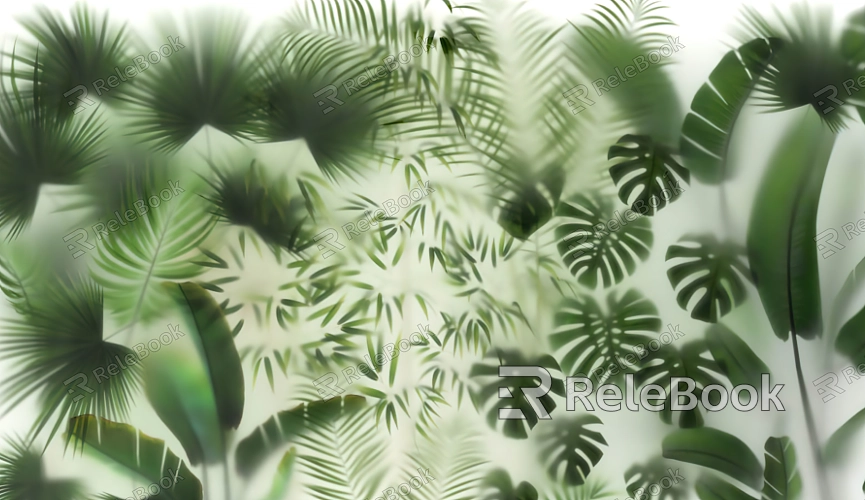How to 3D Texture Plants
Plants play a crucial role in game development, animation, and architectural visualization. Realistic plant textures can significantly enhance the vibrancy of a scene. Commonly used 3D software includes Blender, Maya, and 3ds Max, which offer powerful texture mapping features to help designers achieve high-quality visual effects. This article will detail how to add 3D textures to plants, covering various methods and techniques.

Choosing the Right Texture Type
Before adding textures to plants, it’s essential to select the appropriate type. Common types include color textures, normal textures, and transparency textures.
Color textures provide the basic color information for the plant, normal textures enhance surface detail on the leaves, and transparency textures simulate effects like light passing through the leaves. If you find it complex or time-consuming to source high-quality 3D textures or don’t know how to create them, you can visit Relebook at https://textures.relebook.com/ to download beautiful 3D texture resources.
UV Unwrapping
UV unwrapping is a foundational step in texture mapping. By unfolding the plant model’s surface into a 2D plane, designers can apply textures more accurately.
In Blender, the UV editor allows for easy UV unwrapping, ensuring that the textures do not warp or stretch on the model.
Setting Texture Coordinates
Correctly setting texture coordinates is crucial for displaying textures accurately. Most 3D software automatically generates these coordinates, but designers can adjust them as needed.
Modifying UV coordinates to match the shape of the plant helps ensure that textures are correctly positioned on the surface, especially in complex leaf structures.
Using Detail Textures
To enhance the detail of the plant, detail textures can be employed. These smaller textures are typically layered over the main texture to increase visual depth.
Applying detail textures along the edges of leaves and other subtle areas significantly improves the realism and vibrancy of the plant model.

Choosing Materials and Shaders
The choice of materials and shaders greatly impacts the final appearance of the plant. Appropriate materials can enhance realism.
For example, using Physically Based Rendering (PBR) materials can provide more authentic effects under various lighting conditions, making plants look more striking in natural light.
Real-Time Preview and Adjustments
Real-time preview features allow designers to view texture effects during the workflow, facilitating immediate adjustments.
Software like Blender and Unreal Engine offers real-time rendering options, enabling designers to quickly see the effects of changes and adjust accordingly.
Texture Optimization
Optimizing textures before rendering can enhance efficiency and performance. Reducing texture resolution or using compressed formats can effectively lower resource consumption.
Ensure that only necessary textures and resolutions are used to avoid performance loss due to redundant data.
Post-Processing
After rendering, post-processing is a vital step for enhancing texture effects. Using image editing software like Photoshop allows for fine-tuning of textures.
Common post-processing techniques include color correction, sharpening, and adding details to achieve a more polished final result.
By following these steps, designers can effectively add 3D textures to plants, enhancing their realism and visual appeal. Mastering these techniques not only improves the quality of work but also optimizes the design process, establishing a solid foundation for creating outstanding projects.
If you’re looking for high-quality 3D texture resources or want to download plant-related models, Relebook is an excellent option. Downloading textures and models from Relebook and importing them into your 3D projects can significantly elevate your work's quality.

